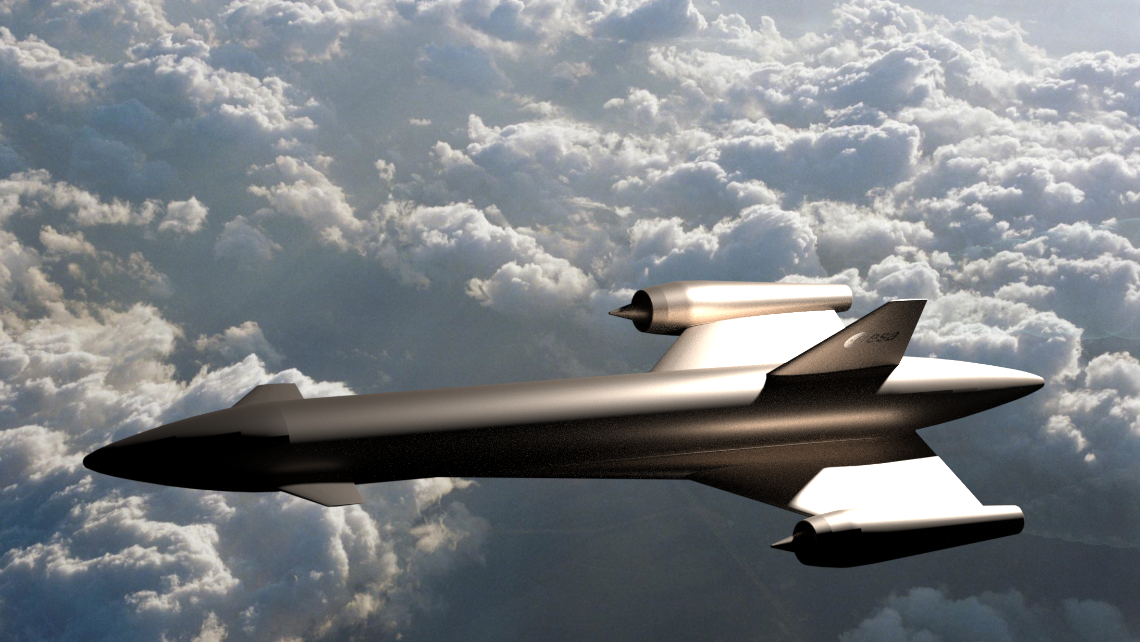Europe doesn't want to be left out of the space plane party.
The European Space Agency (ESA) is funding the development of a hypersonic space plane pathfinder, which will start flying by 2031 if all goes according to plan.
The work is being done via a research program called Invictus, which is led by the consulting firm Frazer-Nash. Invictus will leverage technology developed by the English company Reaction Engines Ltd., which aimed to build a huge space plane called Skylon but went bankrupt last year.

The key piece of Invictus tech is a "pre-cooler," which Reaction Engines built and tested for its Synergetic Air-Breathing Rocket Engine (SABRE). SABRE combined aspects of jet and rocket propulsion; it was designed to pull oxygen out of the air during flight at lower levels of Earth's atmosphere, reducing the need to carry propellant and therefore increasing efficiency.
"Aircraft that fly at hypersonic speeds — more than 5 times the speed of sound — face extremely high temperatures due to shock heating and the friction from the air. Typical aircraft engines cannot operate in these conditions, as the air is too hot to handle," Frazer-Nash representatives said in a statement.
This pre-cooler solves this problem, cooling "the air before it reaches the engine, allowing conventional aircraft engines to travel at hypersonic speeds," Frazer-Nash added.
Invictus isn't a huge project; its funding is 7 million pounds (about $9.4 million US at current exchange rates), according to the company. But it could have a big impact on European spaceflight, according to ESA.
"Hypersonic flight is not just the next frontier of aerospace — it is the gateway to a new paradigm of mobility, defense, and space access," Tommaso Ghidini, head of the Mechanical Department at the agency, said in the same statement.
"With Invictus, Europe is seizing the opportunity to lead in technologies that will redefine how we move across the planet and reach beyond it," he added. "By mastering reusable, air-breathing propulsion, we are laying the foundation for aircraft that take off like planes and reach orbit like rockets — revolutionizing both terrestrial and orbital transportation."
The plan calls for the Invictus team — a consortium led by Frazer-Nash that includes Spirit AeroSystems and Cranfield University, among other partners — to deliver "the concept and elements of preliminary design of the full flight system" 12 months from now.
The "full flight system" will be a reusable vehicle that takes off from, and lands on, a runway like an airplane. It will be up and running by early 2031, if all goes to plan, and could have a variety of uses and applications.
"We look forward to seeing how the work develops and the opportunity it presents for boosting economic growth and national security," Tony Forsythe, head of space technology at the U.K. Space Agency, said in the same statement.
Invictus isn't the only European space plane in development. Last month, for example, the French government and the French company Dassault Aviation announced plans for a demonstrator called VORTEX.
Space planes are experiencing something of a resurgence after the retirement of the most famous such vehicle — NASA's space shuttle — in 2011. The U.S. military operates a robotic orbital space plane called the X-37B, for example, and China has a similar vehicle, called Shenlong. Virgin Galactic flies a suborbital space plane for tourism and research purposes.
A number of other companies are developing space planes as well, including Sierra Nevada Corp., Dawn Aerospace and Radian Aerospace.

.jpg) 4 hours ago
1
4 hours ago
1
 English (US)
English (US)